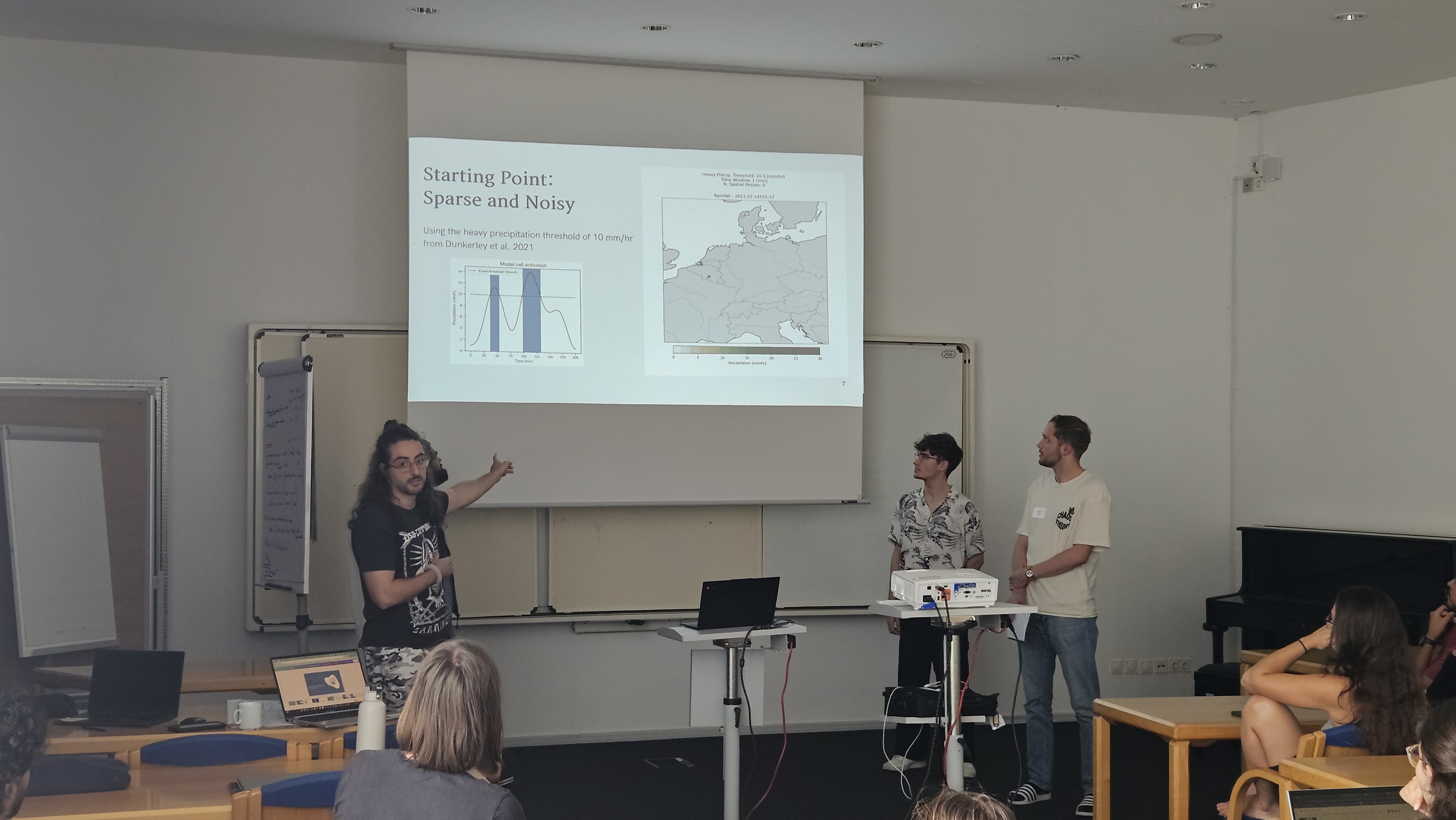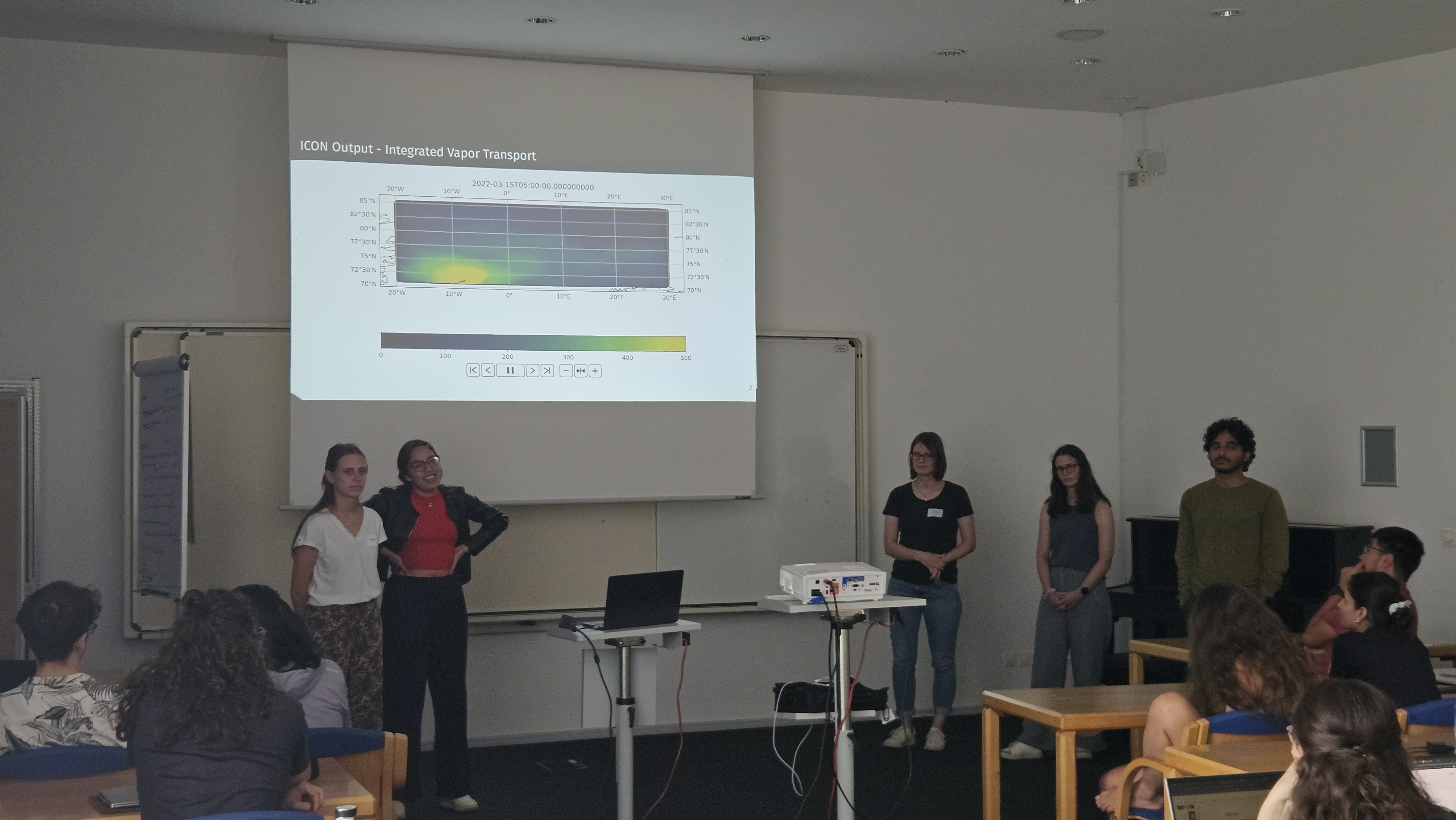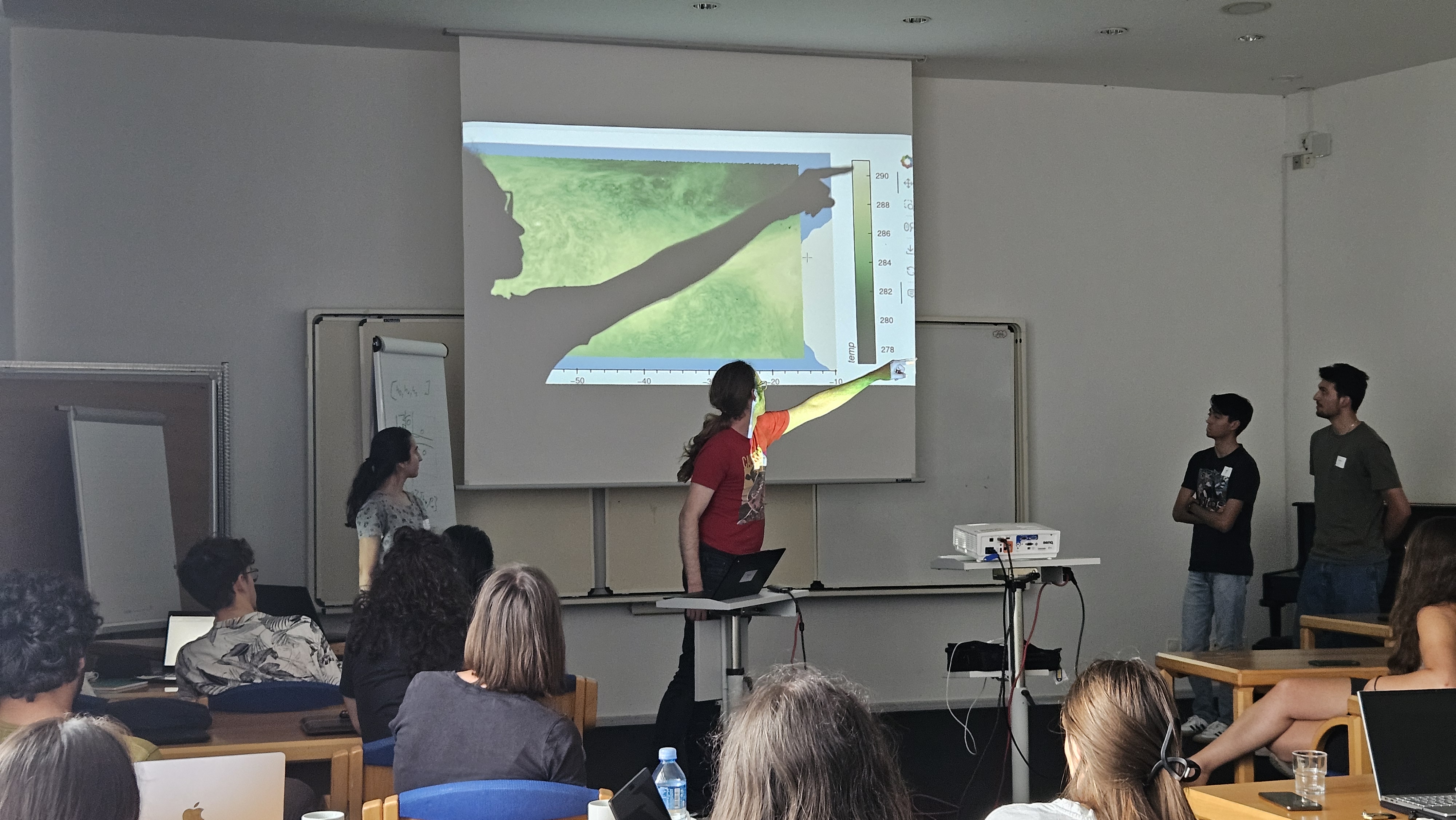Event detection in action – Students build tools to track climate extremes
Lauenburg, 2 August 2025 – Days 4-6 of the hpc4climate 2025 Summer School marked a turning point for participants: after going throught the fundamentals of climate science and modelling, it was time to roll up their sleeves and tackle their first coding challenge.
This challenge centered on event detection in climate simulations, using the ComIn interface for the ICON model. ComIn allows participants to dynamically plug in Python, Fortran, or C/C++ routines, providing direct access to model variables during runtime. With this flexible setup, students were able to experiment with algorithms that trigger specific outputs whenever an extreme event is detected, dramatically reducing data volumes while capturing key information.
The challenge pushed participants to detect and analyze major climate events based on real-world data and case studies. Working in small groups, students explored different phenomena, developing and presenting their first ComIn-based solutions:
Extreme Precipitation
Two groups focused on the Ahr River floods of July 2021 in Germany, one of the most devastating recorded extreme precipitation events in Central Europe.
Group 1 created a precipitation mask for hourly rates exceeding 10 mm/hr and accumulated totals from July 14, 00:00 UTC onward. Animated plots highlighted hotspots of intense rainfall across Western Germany.
Group 2 used the same event but added time-window smoothing for more coherent visualization of precipitation rates, combining it with a performance enhancement approach to optimize code efficiency.

Atmospheric Rivers
Another group turned their attention to an atmospheric river event over the Arctic from 15 March 2022, detected during the HALO-(AC)³ and stretching from Greenland to Svalbard. These phenomena are represented by long, narrow bands of moist air in the atmosphere carrying huge amounts of water vapor across thousands of kilometers, with high impact on land when they make landfall or meet colder air, as they can release this moisture as heavy rain or snow.
They applied thresholds for integrated water vapor (IWV > 7) and integrated vapor transport (IVT > 250) to flag the phenomenon in ICON simulations. While plotting ComIn outputs continuously proved challenging, the algorithm successfully identified the event, demonstrating the potential for improved real-time detection methods.

Contrails
This group tackled the impact of aviation on the atmosphere, focusing on contrail formation from aircraft exhaust.
Using flight tracks from July–October 2023 (OpenSky data), they mimicked aircraft exhaust by addind water vapor into ICON via ComIn. Applying the Schmidt-Appleman criterion for contrail formation and ice supersaturation thresholds for persistence, they pinpointed areas of likely contrail development. By comparing ICON simulations with and without added water vapor exhaust, they visualized contrail regions, illustrating how aviation could leave a significant climate footprint beyond CO₂ emissions.

Tropical Cyclones
Two teams chose Hurricane Paulette (September 2020) as their test case.
Group 1 developed an online tracking method for low-pressure centers (<1010 hPa), following minima over time and plotting the cyclone’s path along with its core temperature.
Group 2 worked on distinguishing multiple low-pressure systems, experimenting with wind speed data to refine cyclone detection and track generation.
While some steps remain for a fully automated, robust product, both groups laid the groundwork for real-time cyclone tracking plugins in ICON.

Learning by Doing
The first coding challenge brought together skills in HPC, data handling, climate science, and collaborative coding, showing how ComIn can empower researchers to design targeted analyses within complex Earth system simulations.
It was a few days of teamwork, debugging, “aha!” moments, and innovation — and the results highlight the potential of open, modular HPC tools to enhance our ability to monitor and understand extreme climate events.
Looking ahead, Coding Challenge 2 will shift focus from event detection to energy diagnostics in ICON, exploring how energy budgets are computed within the model and how this part of the code can be ported to C++ using Kokkos. This next step will challenge students to think about performance portability, modern HPC programming models, and optimization strategies for large-scale climate simulations.
